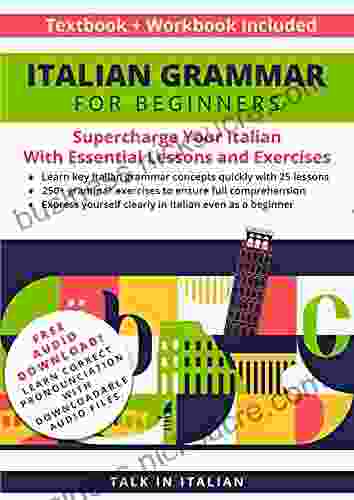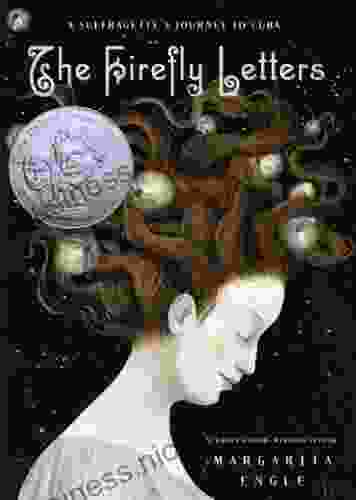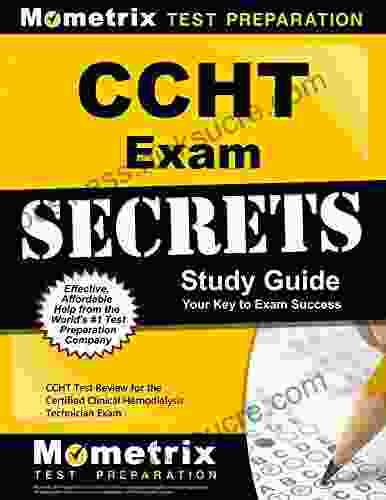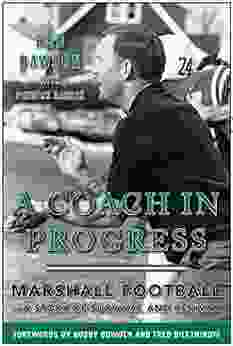Mastering the Foundations: English Grammar for ESL Elementary Students

For students embarking on their journey with the English language, understanding the intricacies of grammar is crucial. At the elementary level, establishing a solid grammatical foundation is essential for effective communication and academic success. This article delves into the core concepts of English grammar for ESL elementary students, providing a comprehensive guide to assist them in building a strong linguistic framework.
Parts of Speech: Essential Building Blocks
The foundation of grammar lies in understanding the different parts of speech. These categories define the function of words within sentences and include:
4.2 out of 5
| Language | : | English |
| File size | : | 425 KB |
| Text-to-Speech | : | Enabled |
| Screen Reader | : | Supported |
| Enhanced typesetting | : | Enabled |
| Word Wise | : | Enabled |
| Print length | : | 133 pages |
| Lending | : | Enabled |
- Nouns: Nouns represent people, places, things, or ideas (e.g., boy, school, book, happiness).
- Verbs: Verbs describe actions or states of being (e.g., run, jump, sleep, feel).
- Adjectives: Adjectives provide additional information about nouns, describing their qualities (e.g., tall, beautiful, old).
- Adverbs: Adverbs modify verbs, adjectives, or other adverbs, describing how or when something is done (e.g., slowly, quickly, very).
- Prepositions: Prepositions connect nouns, pronouns, or phrases to other words in a sentence, indicating their relationship (e.g., on, in, at, by).
- Conjunctions: Conjunctions connect words, phrases, or clauses to form compound sentences (e.g., and, but, or, however).
li>Pronouns: Pronouns replace nouns in a sentence to avoid repetition (e.g., he, she, it, we).
Sentence Structure: The Framework of Communication
Understanding sentence structure is paramount for effective communication. English sentences follow a basic Subject-Verb-Object (SVO) pattern, with variations based on sentence type:
- Declarative Sentences: These are statements that convey information (e.g., The boy is running).
- Interrogative Sentences: Questions seek information and end with a question mark (e.g., Where is the ball?).
- Imperative Sentences: Commands or instructions that tell people to do something (e.g., Open the door!).
- Exclamatory Sentences: Sentences that express strong emotions (e.g., How beautiful the sunset is!).
Tenses: Time and Action
Tenses convey the time frame of actions or states of being:
- Present Simple: Used for actions that are happening now or are habitual (e.g., I eat breakfast).
- Present Continuous: Indicates actions that are in progress or happening over a period (e.g., I am eating breakfast).
- Present Perfect: Expresses actions that started in the past and have a connection to the present (e.g., I have eaten breakfast).
- Past Simple: Used for actions that happened in the past (e.g., I ate breakfast).
- Past Continuous: Describes actions that were in progress at a specific time in the past (e.g., I was eating breakfast).
- Past Perfect: Conveys actions that occurred before another action in the past (e.g., I had eaten breakfast before you arrived).
- Future Simple: Expresses actions that will happen in the future (e.g., I will eat breakfast).
Modals: Expressing Possibility and Necessity
Modal verbs are used to express the speaker's attitude towards an action or event:
- Can: Indicates ability, permission, or possibility (e.g., I can jump).
- Cannot (Can't): Negation of ability or permission (e.g., I cannot play the guitar).
- Could: Expresses possibility, ability, or a request (e.g., Could you please open the window?).
- May: Indicates permission, possibility, or a suggestion (e.g., You may sit down).
- Might: Suggests possibility or uncertainty (e.g., It might rain tomorrow).
- Must: Expresses necessity or obligation (e.g., You must study for your test).
- Should: Indicates advice, obligation, or expectation (e.g., You should visit your grandmother).
Punctuation: Clarity and Meaning
Proper punctuation is essential for clear and accurate communication:
- Period (.): Ends declarative and imperative sentences.
- Question Mark (?): Ends interrogative sentences.
- Exclamation Mark (!): Ends exclamatory sentences.
- Comma (,): Separates items in a list, joins independent clauses, or sets off introductory elements.
- Quotation Marks (" "): Encloses direct speech.
Practice and Application: Building Fluency
To master English grammar, regular practice is crucial. Here are some tips to reinforce understanding:
- Read widely: Exposure to written English helps students absorb grammatical structures.
- Write often: Practice writing sentences and paragraphs to strengthen grammatical application.
- Speak frequently: Engage in conversations to practice using grammar in context.
- Use online resources: Utilize grammar exercises, videos, and interactive tools to supplement learning.
- Seek feedback: Share written work with teachers or peers for constructive criticism.
: Empowering ESL Learners
By gaining a solid foundation in English grammar, ESL elementary students embark on a path towards effective communication and academic success. The concepts outlined in this article provide a comprehensive overview of the core elements of English grammar. With consistent practice and a positive learning attitude, students can confidently navigate the intricacies of the English language and fully engage in the world of English communication.
Additional Resources:
- ESL Gold: English Grammar
- EF English Live: English Grammar
- Learn English: English Grammar
4.2 out of 5
| Language | : | English |
| File size | : | 425 KB |
| Text-to-Speech | : | Enabled |
| Screen Reader | : | Supported |
| Enhanced typesetting | : | Enabled |
| Word Wise | : | Enabled |
| Print length | : | 133 pages |
| Lending | : | Enabled |
Do you want to contribute by writing guest posts on this blog?
Please contact us and send us a resume of previous articles that you have written.
 Fiction
Fiction Non Fiction
Non Fiction Romance
Romance Mystery
Mystery Thriller
Thriller SciFi
SciFi Fantasy
Fantasy Horror
Horror Biography
Biography Selfhelp
Selfhelp Business
Business History
History Classics
Classics Poetry
Poetry Childrens
Childrens Young Adult
Young Adult Educational
Educational Cooking
Cooking Travel
Travel Lifestyle
Lifestyle Spirituality
Spirituality Health
Health Fitness
Fitness Technology
Technology Science
Science Arts
Arts Crafts
Crafts DIY
DIY Gardening
Gardening Petcare
Petcare Chris Scott
Chris Scott Jean Haner
Jean Haner Ruth Ehrhardt
Ruth Ehrhardt Ed Parker
Ed Parker Benjamin Alire Saenz
Benjamin Alire Saenz Lance Gettler
Lance Gettler Gregory Hodges
Gregory Hodges Henry Petroski
Henry Petroski Stuart Ritchie
Stuart Ritchie Horace G Hutchinson
Horace G Hutchinson Mark A Runco
Mark A Runco Susan J Fisher
Susan J Fisher Holly Jackson
Holly Jackson Rachel Blunk
Rachel Blunk David Dibenedetto
David Dibenedetto Stuart Shanker
Stuart Shanker William G Tierney
William G Tierney Tom Gilmore
Tom Gilmore Thomas C Tabor
Thomas C Tabor Bradford Angier
Bradford Angier Christine Conners
Christine Conners Josh Sundquist
Josh Sundquist Robert K Yin
Robert K Yin Dan Benardot
Dan Benardot James R Andrews
James R Andrews Alexander Boxer
Alexander Boxer R Michael Shaft
R Michael Shaft Ray Jarrett
Ray Jarrett Kris Wilder
Kris Wilder Ben Romans
Ben Romans Thomas Berry
Thomas Berry Jakub Kalinowski
Jakub Kalinowski Al Sweigart
Al Sweigart Becky Goddard Hill
Becky Goddard Hill Gillian Hutchinson
Gillian Hutchinson Ricardo D Palacios
Ricardo D Palacios Brad Edmondson
Brad Edmondson Stuart Clark
Stuart Clark Duncan Wells
Duncan Wells Margarita Engle
Margarita Engle Arthur F Coombs Iii
Arthur F Coombs Iii Tina Olton
Tina Olton Joel Spring
Joel Spring Bradley G Stevens
Bradley G Stevens Charles E Schaefer
Charles E Schaefer Katie Banks
Katie Banks Elizabeth Parker
Elizabeth Parker Brad Walker
Brad Walker Deborah Tannen
Deborah Tannen Harville Hendrix
Harville Hendrix Simon Singh
Simon Singh David Nicholls
David Nicholls Gerald Pruett
Gerald Pruett Noelle Stevenson
Noelle Stevenson Els Van Geyte
Els Van Geyte Mike Carter
Mike Carter Audrey Sutherland
Audrey Sutherland Inc Barcharts
Inc Barcharts John L Crassidis
John L Crassidis Rachel Cathan
Rachel Cathan Gene Kugach
Gene Kugach Mercedes Lackey
Mercedes Lackey Katie Shaw
Katie Shaw Joanne Webb
Joanne Webb Elizabeth King
Elizabeth King Lorraine Allman
Lorraine Allman Kathy A Zahler
Kathy A Zahler Sophia Glock
Sophia Glock Mike Acker
Mike Acker Ingrid Kohn
Ingrid Kohn Kindle Interactive Edition
Kindle Interactive Edition Richard Jefferies
Richard Jefferies Julie Hall
Julie Hall Rainbow Rowell
Rainbow Rowell Derek Prince
Derek Prince Jenny Hall
Jenny Hall Paola Roig
Paola Roig Eben Weiss
Eben Weiss Mariolina Ceriotti Migliarese
Mariolina Ceriotti Migliarese Jessica Rhodes
Jessica Rhodes Richard Hartley
Richard Hartley Graham Bowley
Graham Bowley Beth Bartolini Salimbeni
Beth Bartolini Salimbeni Kathie Lee Gifford
Kathie Lee Gifford Joseph A Gallian
Joseph A Gallian Sarah Leah Chase
Sarah Leah Chase Dawn Davenport
Dawn Davenport Randy Kadish
Randy Kadish Kenneth Hayes
Kenneth Hayes Martin E P Seligman
Martin E P Seligman Michelle Medlock Adams
Michelle Medlock Adams Kenny Ranen
Kenny Ranen Cameran Eubanks Wimberly
Cameran Eubanks Wimberly Walter Martin
Walter Martin Yvon Chouinard
Yvon Chouinard Peggie Hall
Peggie Hall Db King
Db King Mark Jackson
Mark Jackson Sofia Price
Sofia Price Jamie James
Jamie James Kami Garcia
Kami Garcia Aryeh Kaplan
Aryeh Kaplan Karen Gravelle
Karen Gravelle Drew Neil
Drew Neil Arthur Scott Bailey
Arthur Scott Bailey Art Smith
Art Smith Forrest Griffin
Forrest Griffin Kate Gladdin
Kate Gladdin Crystal Marie Fleming
Crystal Marie Fleming Daniel Mersey
Daniel Mersey Sharleen Woods
Sharleen Woods Nichola Luther
Nichola Luther Lechna Baram
Lechna Baram Rick Curtis
Rick Curtis Prem Carnot
Prem Carnot Regina Leeds
Regina Leeds Kay Lynn Wilson
Kay Lynn Wilson Stephen Jay Gould
Stephen Jay Gould Grace Stockholm
Grace Stockholm David Bodanis
David Bodanis Benny A Wit
Benny A Wit Jesper Juul
Jesper Juul Hans Paetz Gen Schieck
Hans Paetz Gen Schieck Mito Bessalel
Mito Bessalel Milli Hill
Milli Hill Mary Ann Ochota
Mary Ann Ochota Jon Patrick Hatcher
Jon Patrick Hatcher Laura Hulleman
Laura Hulleman Ben Hogan
Ben Hogan Mistletoe Christmas Collection
Mistletoe Christmas Collection Stan Skrabut
Stan Skrabut Hunter Allen
Hunter Allen David Hatcher Childress
David Hatcher Childress Paul Mcghee
Paul Mcghee Beth Shaw
Beth Shaw Matt Kalman
Matt Kalman Isaac Newton
Isaac Newton Cliff Jacobson
Cliff Jacobson Vijay Vad
Vijay Vad Leigh East
Leigh East Arthur Bochner
Arthur Bochner Ray Mears
Ray Mears John Miller
John Miller Rob Bignell
Rob Bignell Judy Bartkowiak
Judy Bartkowiak Hayley Dimarco
Hayley Dimarco John Vince
John Vince Robert Heidler
Robert Heidler Mary E Pearson
Mary E Pearson Susan Radulovacki
Susan Radulovacki Jada Fisher
Jada Fisher Robert W Cohen
Robert W Cohen Be Learning
Be Learning Hsiang Shui Chen
Hsiang Shui Chen Ronald D Siegel
Ronald D Siegel Marc Macyoung
Marc Macyoung Kathy Kochan
Kathy Kochan Jean Gebser
Jean Gebser Cal Peternell
Cal Peternell Lisa A Alzo
Lisa A Alzo Eric Smith
Eric Smith Denny Krahe
Denny Krahe Kimberly Eldredge
Kimberly Eldredge Courtney Loquasto
Courtney Loquasto Briana Wiles
Briana Wiles Michael R Ange
Michael R Ange Kirkham Ross
Kirkham Ross Sara Hopkinson
Sara Hopkinson Cassandra Vieten
Cassandra Vieten Robin Theiss
Robin Theiss Hazrat Inayat Khan
Hazrat Inayat Khan Bob Litwin
Bob Litwin Clifford A Pickover
Clifford A Pickover Sean Gordon Murphy
Sean Gordon Murphy Nancy Springer
Nancy Springer Nsca National Strength Conditioning Association
Nsca National Strength Conditioning Association Mike Rohde
Mike Rohde Martin Shaw
Martin Shaw W Michael Kelley
W Michael Kelley Eliza Reid
Eliza Reid Thomas J Sims
Thomas J Sims Richard L Currier
Richard L Currier Scott Draper
Scott Draper Charlie Craven
Charlie Craven Deborah Jiang Stein
Deborah Jiang Stein Chris Hart
Chris Hart Brendan Noble
Brendan Noble Whitney Holcombe
Whitney Holcombe Ralph H Hruban
Ralph H Hruban William L Briggs
William L Briggs Rod Heikell
Rod Heikell Scott Morrison
Scott Morrison Rae Yang
Rae Yang George Sandford
George Sandford Christia Spears Brown
Christia Spears Brown Frank Morin
Frank Morin Don Cherry
Don Cherry Robert R Harr
Robert R Harr Michael Strevens
Michael Strevens Lucy Coleman
Lucy Coleman Mark Bishop
Mark Bishop Izzy Judd
Izzy Judd Elliot Davis
Elliot Davis Aaron Linsdau
Aaron Linsdau Erik Weihenmayer
Erik Weihenmayer Kathleen Cushman
Kathleen Cushman Itzhak Bentov
Itzhak Bentov Peter Haining
Peter Haining Tori Bortman
Tori Bortman Arturo Escobar
Arturo Escobar D A Saia
D A Saia E Digby Baltzell
E Digby Baltzell Steven Kotler
Steven Kotler James Lawson
James Lawson T Ralph Turner
T Ralph Turner Benny Lewis
Benny Lewis Mizuho Kusanagi
Mizuho Kusanagi Lisa Damour Ph D
Lisa Damour Ph D Laura Navarre
Laura Navarre Logan Duvall
Logan Duvall Gabor Szauer
Gabor Szauer Paul Levy
Paul Levy Pat Falvey
Pat Falvey Louis Berney
Louis Berney Larry Krieger
Larry Krieger Jay Gitomer
Jay Gitomer 005 Edition Kindle Edition
005 Edition Kindle Edition Mark Zegarelli
Mark Zegarelli Asato Asato
Asato Asato Kerry Keene
Kerry Keene Joe Cermele
Joe Cermele Michael Tlanusta Garrett
Michael Tlanusta Garrett Jeffery Pfeffer
Jeffery Pfeffer Gong Chen
Gong Chen Chris Bonington
Chris Bonington Lex Luger
Lex Luger Tom Holland
Tom Holland Thomas Henry Huxley
Thomas Henry Huxley Seth Fletcher
Seth Fletcher Michael Crichton
Michael Crichton Philip Pullman
Philip Pullman S Frederick Starr
S Frederick Starr Ashley Rhodes Courter
Ashley Rhodes Courter Match
Match Brian Noyes
Brian Noyes Brittney Wilson
Brittney Wilson Michael Mccarthy
Michael Mccarthy Lsatmax Lsat Prep
Lsatmax Lsat Prep Daniel Mccain
Daniel Mccain Charles Bowden
Charles Bowden Arthur Beiser
Arthur Beiser Michael Angelo Costa
Michael Angelo Costa Stephanie Muntone
Stephanie Muntone Edwin Monk
Edwin Monk Pittacus Lore
Pittacus Lore Lisa Crayford
Lisa Crayford Charlie Portlock
Charlie Portlock Irene Mchenry
Irene Mchenry Ascencia
Ascencia L M Montgomery
L M Montgomery Joanne Rodrigues
Joanne Rodrigues Thomas Teselli
Thomas Teselli Talk In Italian
Talk In Italian Louise Davidson
Louise Davidson Karl F Kuhn
Karl F Kuhn Dave Seminara
Dave Seminara Michael J Steele
Michael J Steele Sparknotes
Sparknotes Penny Simkin
Penny Simkin Arthur Benjamin
Arthur Benjamin Arun Jagannathan
Arun Jagannathan Mark Beaumont
Mark Beaumont Pass Your Class
Pass Your Class E J R David
E J R David Jessica Mccrory Calarco
Jessica Mccrory Calarco K E Ganshert
K E Ganshert Douglas Fisher
Douglas Fisher David Kinch
David Kinch Bridget Bishop
Bridget Bishop Jessica Seinfeld
Jessica Seinfeld Jamie Andrews
Jamie Andrews James Poskett
James Poskett Toby Neighbors
Toby Neighbors Red Dawson
Red Dawson Gail Reichlin
Gail Reichlin Karyn Siegel Maier
Karyn Siegel Maier Auriane Desombre
Auriane Desombre Scott Hartshorn
Scott Hartshorn Ursula K Le Guin
Ursula K Le Guin Stefan Ecks
Stefan Ecks Kathy Charner
Kathy Charner Paul Henley
Paul Henley Kirstie Mclellan Day
Kirstie Mclellan Day Dustin Lynx
Dustin Lynx Michael Grant
Michael Grant Douglas Adams
Douglas Adams Gabriel J Connor
Gabriel J Connor Tracy Zager
Tracy Zager Nystce Exam Secrets Test Prep Team
Nystce Exam Secrets Test Prep Team Lynn Arave
Lynn Arave Dana Frank
Dana Frank Nigel Latta
Nigel Latta Camieyes Inc
Camieyes Inc Gerry Donohue
Gerry Donohue Robert H Pantell
Robert H Pantell Barry H Lopez
Barry H Lopez Justina Ireland
Justina Ireland Ash Fortis
Ash Fortis Echo Heron
Echo Heron Jennifer Love
Jennifer Love The College Board
The College Board Hernan Chousa
Hernan Chousa J P Moreland
J P Moreland Joyce Goldstein
Joyce Goldstein John H Cunningham
John H Cunningham Milo Kemp
Milo Kemp Darren Byler
Darren Byler Eric S Raymond
Eric S Raymond Darren Palmer
Darren Palmer Gareth Southgate
Gareth Southgate Marcia K Anderson
Marcia K Anderson Stefan Burban
Stefan Burban Edith Pattou
Edith Pattou Karin Cadwell
Karin Cadwell Braeden Baade
Braeden Baade William Egelman
William Egelman Ethan Sawyer
Ethan Sawyer Peter Goos
Peter Goos Greg Nelson
Greg Nelson Kurt Koontz
Kurt Koontz Jeff Seidel
Jeff Seidel Sarah Shephard
Sarah Shephard Jacqueline Melvin
Jacqueline Melvin Jennifer Comeaux
Jennifer Comeaux Steve Sheward
Steve Sheward Leon James
Leon James Claire Hartfield
Claire Hartfield Ransom Riggs
Ransom Riggs Lynn Clark
Lynn Clark Zapheria Bell
Zapheria Bell Isle Osaki
Isle Osaki Isolina Ricci
Isolina Ricci Isaac Asimov
Isaac Asimov Cornelia Pelzer Elwood
Cornelia Pelzer Elwood Stacy Lynn Harp
Stacy Lynn Harp Kate Gruenwald Pfeifer
Kate Gruenwald Pfeifer Laurie Katz
Laurie Katz Elaine Menger
Elaine Menger Charlotte Browne
Charlotte Browne John Small
John Small Manveen Kaur
Manveen Kaur Braun Anthony
Braun Anthony Rika Lukac
Rika Lukac Roberta Steinberg
Roberta Steinberg The Secret Cyclist
The Secret Cyclist Stephanie Jeanette Bradley
Stephanie Jeanette Bradley Doreen Lenz Holte
Doreen Lenz Holte Tony Kemerly
Tony Kemerly Hanna Seymour
Hanna Seymour R M Romero
R M Romero Anni Daulter
Anni Daulter Barack Obama
Barack Obama Jamie Ward
Jamie Ward Belinda Norton
Belinda Norton William Henry
William Henry Scott Cookman
Scott Cookman John Treacher
John Treacher Roger Wiens
Roger Wiens Marie Bigelow
Marie Bigelow Stephen J Wright
Stephen J Wright Simone Elkeles
Simone Elkeles Nikita Gill
Nikita Gill Julia Ann Clayton
Julia Ann Clayton Sarah Allen
Sarah Allen Stefan Klein
Stefan Klein Chris Algieri
Chris Algieri Dr Terry Zachary
Dr Terry Zachary Martin Hall
Martin Hall Brian J Lang
Brian J Lang Drew Harris
Drew Harris Robert E Moyer
Robert E Moyer Linda Carter
Linda Carter Jake Maloney
Jake Maloney Arthur Staple
Arthur Staple Dave King
Dave King Emily M Leonard
Emily M Leonard Lama Zopa Rinpoche
Lama Zopa Rinpoche Brandi Dion
Brandi Dion Nicholas Marsh
Nicholas Marsh Norman Link
Norman Link Gavin Chappell
Gavin Chappell Sarah Burton
Sarah Burton Rojan Robotham
Rojan Robotham Howard Burton
Howard Burton Donald E Brown
Donald E Brown Richard G Lomax
Richard G Lomax Richard F Larkin
Richard F Larkin Pat Anvil
Pat Anvil Colin Allen
Colin Allen Paul Chapman
Paul Chapman Dawn Hogue
Dawn Hogue Drew Monkman
Drew Monkman Conrad Bauer
Conrad Bauer Meg Meeker
Meg Meeker Thomas Kinkade
Thomas Kinkade Nir Barzilai
Nir Barzilai Brian Cole
Brian Cole Keith Bateman
Keith Bateman Rachael Lippincott
Rachael Lippincott 11th Edition Kindle Edition
11th Edition Kindle Edition Elaine Howard Ecklund
Elaine Howard Ecklund Chris Bird
Chris Bird Rob Rachowiecki
Rob Rachowiecki Lynelle Schneeberg
Lynelle Schneeberg Kate Mosse
Kate Mosse Sharon L Lohr
Sharon L Lohr Janice Mcdonald
Janice Mcdonald Leona Hendrix
Leona Hendrix Susan A Milstein
Susan A Milstein Jeff Galloway
Jeff Galloway Huntley Fitzpatrick
Huntley Fitzpatrick Leigh Montville
Leigh Montville Bill Chambers
Bill Chambers N Katherine Hayles
N Katherine Hayles Eric J Wittenberg
Eric J Wittenberg Susan David
Susan David Scott A Small
Scott A Small Arthur Bovino
Arthur Bovino Ovidiu Calin
Ovidiu Calin Lindsey Bliss
Lindsey Bliss Harvard Business Review
Harvard Business Review Nancy Johnson
Nancy Johnson Erving Goffman
Erving Goffman Ashley Christensen
Ashley Christensen Jason Hanson
Jason Hanson Pat Dooley
Pat Dooley Pamparam Kids Books
Pamparam Kids Books Warren F Kimball
Warren F Kimball Seth Stein
Seth Stein Mark Rosenman
Mark Rosenman Jemma Foster
Jemma Foster Simon Nasht
Simon Nasht Spanked Teen
Spanked Teen Pat Mullaly
Pat Mullaly Karim Soliman
Karim Soliman Dan Jenkins
Dan Jenkins Lore Cottone
Lore Cottone Jeremy Wade
Jeremy Wade Jeremy L Holloway
Jeremy L Holloway Mark Powell
Mark Powell Kindle Edition
Kindle Edition Skyhorse Publishing
Skyhorse Publishing Eighth Edition Kindle Edition
Eighth Edition Kindle Edition Karen M Mcmanus
Karen M Mcmanus Eileen Pollack
Eileen Pollack Brett Topel
Brett Topel Tiffany D Jackson
Tiffany D Jackson Lisa Taddeo
Lisa Taddeo Lauren Sullivan
Lauren Sullivan Wayne Teasdale
Wayne Teasdale Jessica Grogan
Jessica Grogan Hussein A Abbass
Hussein A Abbass John Lawson
John Lawson Jim Gray
Jim Gray Elizabeth E Wein
Elizabeth E Wein Carolyn Nones Vazquez
Carolyn Nones Vazquez Rosalyn Hoffman
Rosalyn Hoffman Brian Johnson
Brian Johnson Pete Peterson
Pete Peterson Swami Vivekananda
Swami Vivekananda Catherine Tucker
Catherine Tucker Patrick M Andendall
Patrick M Andendall Roz Maclean
Roz Maclean Sadie Keller
Sadie Keller Bryce M Towsley
Bryce M Towsley Asanaro
Asanaro Maggie Tokuda Hall
Maggie Tokuda Hall Marlin Bree
Marlin Bree Bret Pettichord
Bret Pettichord Payal Khurana
Payal Khurana Christine Stephenson
Christine Stephenson Jennifer Grouling Cover
Jennifer Grouling Cover T C Edge
T C Edge P T Shank
P T Shank Michael Phelps
Michael Phelps Jim Fergus
Jim Fergus Lisa Cordeiro
Lisa Cordeiro Nadine Slavinski
Nadine Slavinski Ryan Stramrood
Ryan Stramrood Samira Ahmed
Samira Ahmed Mike Mattesi
Mike Mattesi Jim Parks
Jim Parks Paul M Sutter
Paul M Sutter Michel Boivin
Michel Boivin John T Moore
John T Moore Zita Grant
Zita Grant Hrishikesh Joshi
Hrishikesh Joshi Gerry Cheevers
Gerry Cheevers Jim Hartnett Pga
Jim Hartnett Pga Isaiah Helekunihi Walker
Isaiah Helekunihi Walker Fred Zeglin
Fred Zeglin Richard Miller Adi
Richard Miller Adi Dr Monique Thompson Dha Lpc
Dr Monique Thompson Dha Lpc Gary Paulsen
Gary Paulsen Doug Good Feather
Doug Good Feather Malcolm Russell
Malcolm Russell
Light bulbAdvertise smarter! Our strategic ad space ensures maximum exposure. Reserve your spot today!
 Arthur MasonFollow ·3.1k
Arthur MasonFollow ·3.1k Herman MelvilleFollow ·5.2k
Herman MelvilleFollow ·5.2k Ezekiel CoxFollow ·9.4k
Ezekiel CoxFollow ·9.4k Ivan TurnerFollow ·14.1k
Ivan TurnerFollow ·14.1k VoltaireFollow ·15.9k
VoltaireFollow ·15.9k Seth HayesFollow ·6k
Seth HayesFollow ·6k Henry GreenFollow ·5.8k
Henry GreenFollow ·5.8k Cody RussellFollow ·14.2k
Cody RussellFollow ·14.2k

 Braden Ward
Braden Ward125 Recipes to Embark on a Culinary Journey of Virtue and...
Embark on a culinary...

 Benji Powell
Benji PowellItalian Grammar for Beginners: Textbook and Workbook...
Are you interested in...

 Joseph Foster
Joseph FosterThe Suffragette Journey to Cuba: A Long and Winding Road...
The suffragette...

 Dustin Richardson
Dustin RichardsonAsia First Dinghy Sailing Gold Medallist Making Waves
Keerati Bualong is a Thai sailor who made...

 Aleksandr Pushkin
Aleksandr PushkinRediscover the Creator's Purpose for Men: Embracing...
: The Need for a Rediscovery In an era...
4.2 out of 5
| Language | : | English |
| File size | : | 425 KB |
| Text-to-Speech | : | Enabled |
| Screen Reader | : | Supported |
| Enhanced typesetting | : | Enabled |
| Word Wise | : | Enabled |
| Print length | : | 133 pages |
| Lending | : | Enabled |














